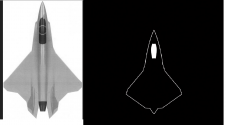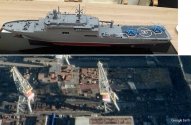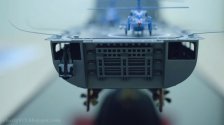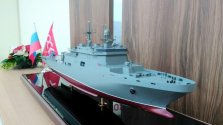Repair of self-propelled missile systems Shturm-S of Russia. The Russian army carries out continuous work on the restoration, repair and commissioning of new military equipment and weapons. We publish a short video on the repair and replacement of the engine in the Shturm-S self-propelled anti-tank missile systems, information about them is in the link on the video in the comments to the video. Equipment is also removed from storage for restoration and commissioning.
You are using an out of date browser. It may not display this or other websites correctly.
You should upgrade or use an alternative browser.
You should upgrade or use an alternative browser.
Russian Military News, Reports, Data, etc.
- Thread starter tphuang
- Start date
Exercises of anti-submarine ships of project 1155 of Russia. The Russian Pacific Fleet conducted exercises to search the waters of the Japanese and Okhotsk Seas for submarines of a conditional enemy. Naval groups practiced the actions of the fleet forces in isolation from permanent bases, conducting naval combat, anti-submarine operations and the organization of air defense. As part of one of the episodes of the exercise, the frigate of project 1155M "Marshal Shaposhnikov" and the large anti-submarine ships of project 1155 "Admiral Tributs" and "Admiral Panteleev" were used, acting as part of a tactical group, the ships carried out the search and destruction of a submarine of a conditional enemy.
Never ever, not even close! In no way not even comparable especially to the latest "teaser" from LM: Now I understand, why so many call each and every Chinese aircraft a copy.
You're too worked up. I said visually resemble ... from the top view.

It's just the wing to fuselage blend that's a little similar. In real life, both will be very different aesthetically (particularly to our well trained eyes
No one is calling anything a copy.
Is this a true LPD with wheel deck ?
Cross posting from the engine thread since it's relevant here too.
Another point of comparison is some data about the izd.30 that was released by Saturn and posted on Secret Projects and another link about the engine for the Sukhoi LTS.
So looking at the charts and the translated report, the izd.30 seems like a good engine, but not what the "Russia strong" crowd keeps hyping it up to be. So the izd.30 has 19% better T/W than the AL-41F1, which has a weight of about 1,600 kg and thrust of 14.5 metric tons or 32,000 lbs (15 metric tons or 33,000 lbs in emergency mode), which means T/W of 9.06. This means that izd.30 has T/W of 10.8, so when combined with estimated weight of 1,500 kg, that means 16.2 metric tons or 35,700 lbs full afterburner and 16.7 metric tons or 36,800 lbs in emergency mode. Similarly, the link said that engine of the 5th generation, which likely refers to izd.30, has 30% more thrust than AL-31FP which has 12.5 metric tons of thrust, so this would result in 16.25 metric tons or 35,800 lbs of thrust for izd.30. Which is decent but not amazing considering it's more than 20 years newer than F119.
The specific thrust of AL-41F1 being only 6% lower than izd.30 also doesn't make the izd.30 seem that impressive. Since it fits in the same footprint as the AL-41F1, it's unlikely to have more than 10% higher air flow, which means that it only produces 17% more dry thrust, and considering that Su-57 with AL-41F1 only supercruise at Mach 1.3 or 1.4, some fantastical claims about Su-57's supercruise at Mach 2 with izd.30 is also very unlikely. However, it likely will allow Mach 1.5-1.6 supercruise which is respectable.
The durability of 6,000 hours for the izd.30 is also an improvement over the AL-41F1 with 1,000 hours TBO and 4,000 hours total life, but that's still short of the F119, which has 2,000 hours TBO for hot section, 4,000 hours for cold section, and 8,000 hours life.
Another point of comparison is some data about the izd.30 that was released by Saturn and posted on Secret Projects and another link about the engine for the Sukhoi LTS.
So looking at the charts and the translated report, the izd.30 seems like a good engine, but not what the "Russia strong" crowd keeps hyping it up to be. So the izd.30 has 19% better T/W than the AL-41F1, which has a weight of about 1,600 kg and thrust of 14.5 metric tons or 32,000 lbs (15 metric tons or 33,000 lbs in emergency mode), which means T/W of 9.06. This means that izd.30 has T/W of 10.8, so when combined with estimated weight of 1,500 kg, that means 16.2 metric tons or 35,700 lbs full afterburner and 16.7 metric tons or 36,800 lbs in emergency mode. Similarly, the link said that engine of the 5th generation, which likely refers to izd.30, has 30% more thrust than AL-31FP which has 12.5 metric tons of thrust, so this would result in 16.25 metric tons or 35,800 lbs of thrust for izd.30. Which is decent but not amazing considering it's more than 20 years newer than F119.
The specific thrust of AL-41F1 being only 6% lower than izd.30 also doesn't make the izd.30 seem that impressive. Since it fits in the same footprint as the AL-41F1, it's unlikely to have more than 10% higher air flow, which means that it only produces 17% more dry thrust, and considering that Su-57 with AL-41F1 only supercruise at Mach 1.3 or 1.4, some fantastical claims about Su-57's supercruise at Mach 2 with izd.30 is also very unlikely. However, it likely will allow Mach 1.5-1.6 supercruise which is respectable.
The durability of 6,000 hours for the izd.30 is also an improvement over the AL-41F1 with 1,000 hours TBO and 4,000 hours total life, but that's still short of the F119, which has 2,000 hours TBO for hot section, 4,000 hours for cold section, and 8,000 hours life.
This is all quite a nice analysis, but the slide you refer to doesn't talk about "izd. 30" in the first place. It's a different engine, known for several years already.Cross posting from the engine thread since it's relevant here too.
Another point of comparison is some data about the izd.30 that was released by Saturn and posted on Secret Projects and another link about the engine for the Sukhoi LTS.
So looking at the charts and the translated report, the izd.30 seems like a good engine, but not what the "Russia strong" crowd keeps hyping it up to be. So the izd.30 has 19% better T/W than the AL-41F1, which has a weight of about 1,600 kg and thrust of 14.5 metric tons or 32,000 lbs (15 metric tons or 33,000 lbs in emergency mode), which means T/W of 9.06. This means that izd.30 has T/W of 10.8, so when combined with estimated weight of 1,500 kg, that means 16.2 metric tons or 35,700 lbs full afterburner and 16.7 metric tons or 36,800 lbs in emergency mode. Similarly, the link said that engine of the 5th generation, which likely refers to izd.30, has 30% more thrust than AL-31FP which has 12.5 metric tons of thrust, so this would result in 16.25 metric tons or 35,800 lbs of thrust for izd.30. Which is decent but not amazing considering it's more than 20 years newer than F119.
The specific thrust of AL-41F1 being only 6% lower than izd.30 also doesn't make the izd.30 seem that impressive. Since it fits in the same footprint as the AL-41F1, it's unlikely to have more than 10% higher air flow, which means that it only produces 17% more dry thrust, and considering that Su-57 with AL-41F1 only supercruise at Mach 1.3 or 1.4, some fantastical claims about Su-57's supercruise at Mach 2 with izd.30 is also very unlikely. However, it likely will allow Mach 1.5-1.6 supercruise which is respectable.
The durability of 6,000 hours for the izd.30 is also an improvement over the AL-41F1 with 1,000 hours TBO and 4,000 hours total life, but that's still short of the F119, which has 2,000 hours TBO for hot section, 4,000 hours for cold section, and 8,000 hours life.
what they are releasing can be limited to what they are willing to export. SU-57E is in roe catalogue and one of characteristic is long supersonic flight. this is not large plane for twin engine , large bays with extra weight of TVC. so fuel efficiency achieved through engine, weight reduction in materials and aerodynamics will have greater impact.Cross posting from the engine thread since it's relevant here too.
Another point of comparison is some data about the izd.30 that was released by Saturn and posted on Secret Projects and another link about the engine for the Sukhoi LTS.
So looking at the charts and the translated report, the izd.30 seems like a good engine, but not what the "Russia strong" crowd keeps hyping it up to be. So the izd.30 has 19% better T/W than the AL-41F1, which has a weight of about 1,600 kg and thrust of 14.5 metric tons or 32,000 lbs (15 metric tons or 33,000 lbs in emergency mode), which means T/W of 9.06. This means that izd.30 has T/W of 10.8, so when combined with estimated weight of 1,500 kg, that means 16.2 metric tons or 35,700 lbs full afterburner and 16.7 metric tons or 36,800 lbs in emergency mode. Similarly, the link said that engine of the 5th generation, which likely refers to izd.30, has 30% more thrust than AL-31FP which has 12.5 metric tons of thrust, so this would result in 16.25 metric tons or 35,800 lbs of thrust for izd.30. Which is decent but not amazing considering it's more than 20 years newer than F119.
The specific thrust of AL-41F1 being only 6% lower than izd.30 also doesn't make the izd.30 seem that impressive. Since it fits in the same footprint as the AL-41F1, it's unlikely to have more than 10% higher air flow, which means that it only produces 17% more dry thrust, and considering that Su-57 with AL-41F1 only supercruise at Mach 1.3 or 1.4, some fantastical claims about Su-57's supercruise at Mach 2 with izd.30 is also very unlikely. However, it likely will allow Mach 1.5-1.6 supercruise which is respectable.
The durability of 6,000 hours for the izd.30 is also an improvement over the AL-41F1 with 1,000 hours TBO and 4,000 hours total life, but that's still short of the F119, which has 2,000 hours TBO for hot section, 4,000 hours for cold section, and 8,000 hours life.
Su-57 built in 2023 may have more advanced aero composite materials than what flew a decade ago. Russians consistently self praising there composite tech in Civil aviation. i have also watch where they mentioned that they only need composites blades in much larger engines like PD-35 to have any meaningful impact in weight reduction which means what ever materials they are using in smaller engines are by itself at the top.Than there other advancement in engine tech in Civil aviation like consistently increasing the range of Tu-214. and now top and sustain speeds of PS-90 powered IL-96 where it covers flight distance of 5,900miles in 11 hours. and in reverse flight achieved top speed of 630mph. These numbers are very competitive with speeds and acceleration of latest widebody Boeing and Airbus. and this is not even latest PS-90A3.
this is in 2013.
During its 40,000 hours of operation the engine completed more than 5,000 flights and carried around 1 million passengers as an airplane power plant. Forty thousand hours equates to 4.5 years of continuous flight, during which the engine literally flew around the world. It visited airports in North and South America, Africa, Southeast Asia, Europe and Russia. Today the record setting engine remains in service with Aeroflot.
there other advancements in heli engines that you can see in UKraine with choppers carrying fuel tanks upto 4 in some cases.
once you get whole picture of industry than you can make some conclusion about advancements.
I heard elsewhere that AL-41F1S engine in Su-35 has 1,000 hours TBO and 4,000 hours total life while AL-41F1 engine in Su-57 has 1,500 hours TBO and 6,000 hours total life. So either the Izd. 30 is still not up to expectations since the engine is still early in development, or they got the wrong numbers.The durability of 6,000 hours for the izd.30 is also an improvement over the AL-41F1 with 1,000 hours TBO and 4,000 hours total life, but that's still short of the F119, which has 2,000 hours TBO for hot section, 4,000 hours for cold section, and 8,000 hours life.



